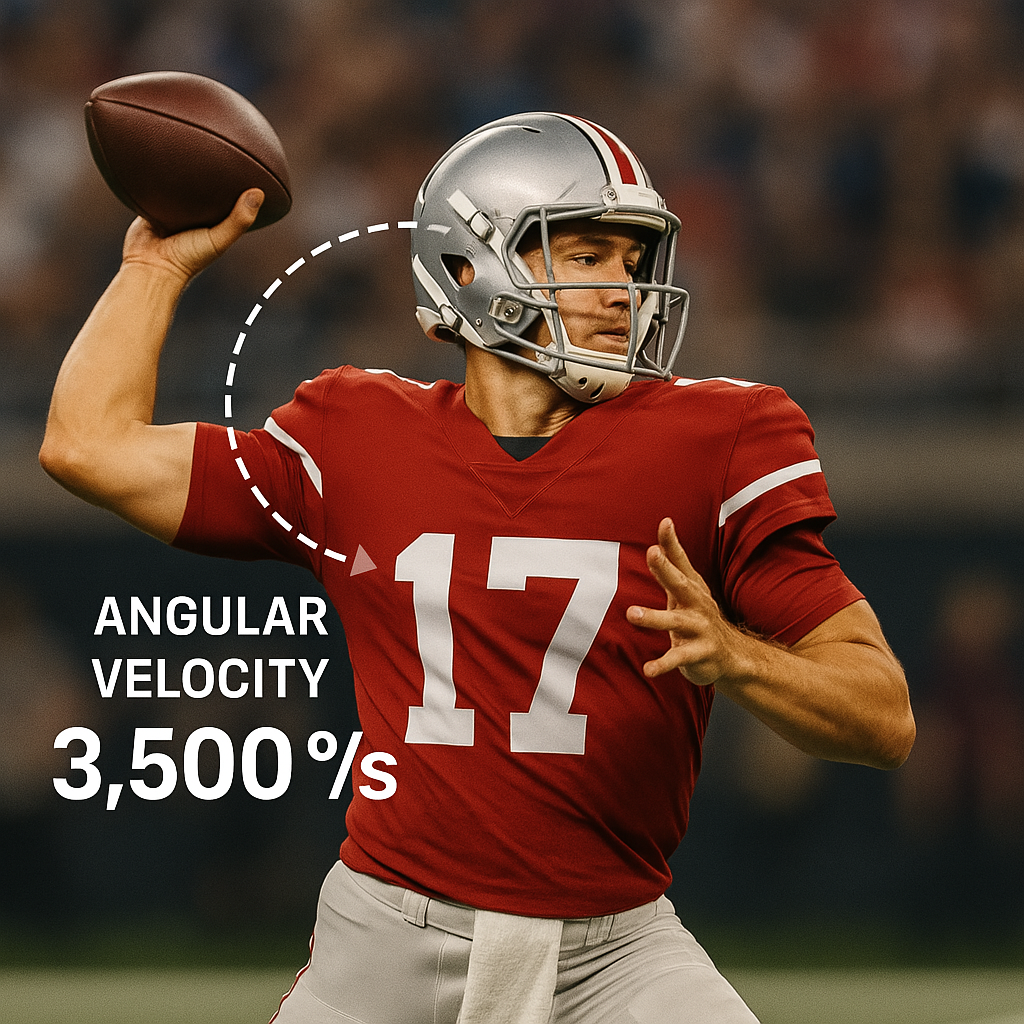Off-Season Ramp Up: Why Volume Before Intensity

When crafting a throwing program for quarterbacks in football, prioritizing volume (total throws) before intensity (throwing effort) is the safer and smarter approach. Muscles, tendons and ligaments are best trained by establishing endurance, range and capacity first. Following these initial concepts while undergoing a detailed arm care and strengthening plan sets a quarterback's tissue and nervous system up for intensive and compressive forces of higher velocities. This method respects the body’s adaptation process, minimizes injury risk, and enhances arm health for the demands of the gridiron.
Throwing a football repeatedly taxes the shoulder and elbow due to high amounts of angular velocity and varus stress, even more so than overhead motions in other sports. High-intensity efforts—think deep balls or max-effort compressive routes (seam, deep out, etc.)—without building a large training base can strain the rotator cuff, exacerbate instability or stress elbow ligaments. Building volume with low-intensity throws, like short routes or linear build up of tosses, establishes endurance first. A 2017 study in The American Journal of Sports Medicine (PMID: 28060576) found rapid workload increases spiked injury rates in pitchers, a lesson applicable to quarterbacks. Gradual volume lets tissues adjust safely.
This progression strengthens the arm’s foundation, increases rotational demands slowly and gradually over time, and sticks to the progressive overload theory in physical adaptation. A 2014 study (PMID: 24832979) showed repetitive, controlled throwing boosts shoulder stability and blood flow, critical for quarterbacks who need durability over a season. Another 2018 study (PMID: 29216703) highlighted how incremental volume cuts overuse injury risk by toughening connective tissues. It’s about building stamina before unleashing power.
Additionally, when building up from an off period of throwing, motor control and “mechanics” are usually off from in-season activity. This is the normal phase of “getting your swing back” where a thrower has to improve timing and sequencing again. Low-intensity throws early allow for a focus on base, footwork, timing, arm angle, and release with reduced strain. A 2020 study (PMID: 31958340) tied poor mechanics under high effort to elbow issues, a risk football players can avoid by refining form early. Volume lays that groundwork.
Once volume is grown in a linear weekly fashion but undulated daily, maybe 65-75 throws per session, intensity can ramp up. A 2019 study on arm speed (PMID: 30689609) showed athletes who increased volume before effort gained velocity safely, relevant for quarterbacks aiming for higher spin rate, more air yards and longer throws.
Starting with volume before intensity keeps quarterbacks healthier. It’s a science-backed strategy tailored to throwing’s demands.
References:
- PMID: 28060576
- PMID: 24832979
- PMID: 29216703
- PMID: 31958340
- PMID: 30689609
